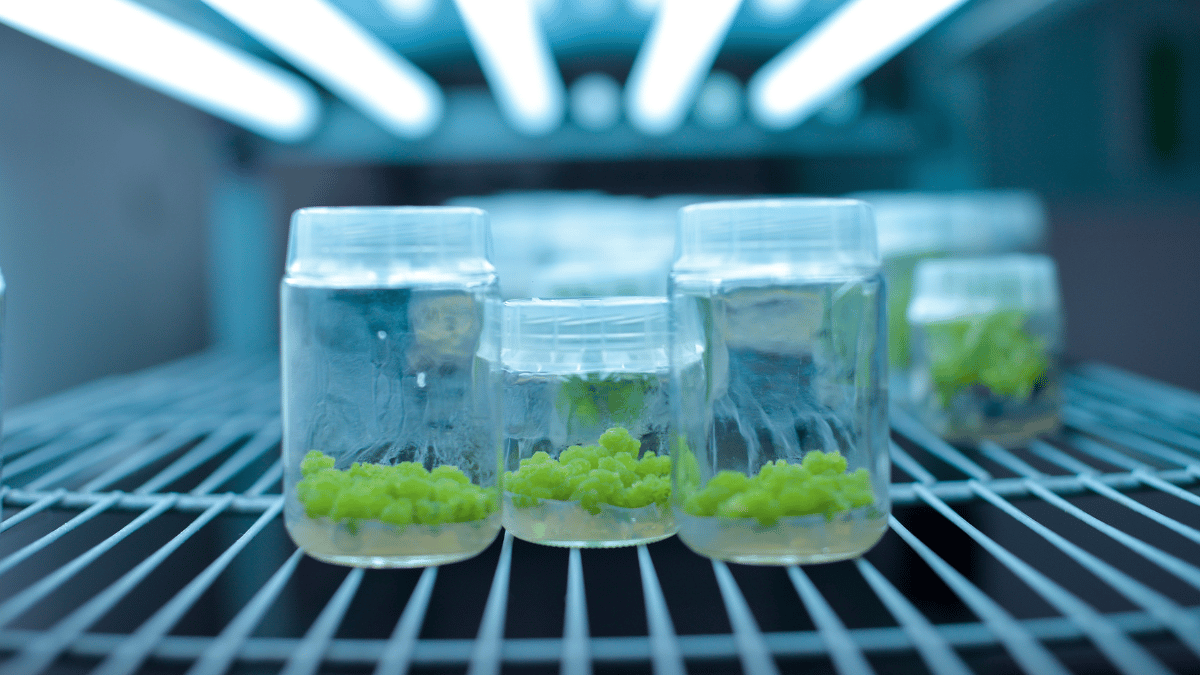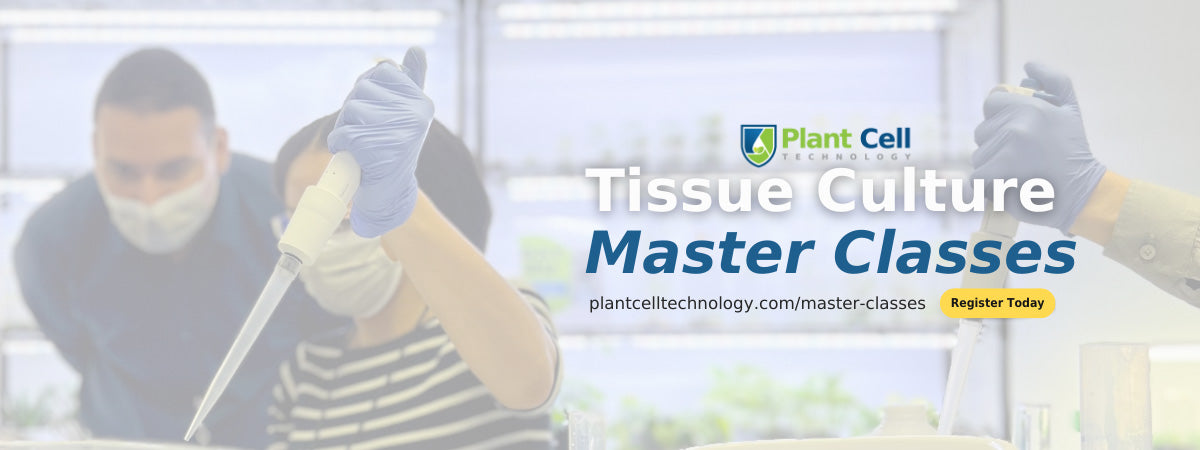
What is In Vitro Grafting?
As a content and community manager, I leverage my expertise in plant biotechnology, passion for tissue culture, and writing skills to create compelling articles, simplifying intricate scientific concepts, and address your inquiries. As a dedicated science communicator, I strive to spark curiosity and foster a love for science in my audience.


Also known as micrografting, in vitro grafting involves joining miniature scions and rootstocks under aseptic conditions, for the growth of plants. It's different from the traditional grafting, but how?
Overview
Grafting is the process of joining two plants together to grow as a single plant. The technique can be traced back 4000 years back to China and Mesopotamia.
Though the technique is only meant for two plants, more plants can be joined to create several unique combinations of characteristics. The upper part of the plant used in the process is known as scion and the lower part is known as the rootstock.
It is a common practice in the horticulture space, especially for growing a variety of fruits. The scion variety plays a key role in determining the fruit characteristics such as size, color, and quality, whereas the rootstock variety influences the size of the tree, its ability to bear fruit early, and its resistance to pests and diseases. In contrast to seedlings, the propagated plants resulting from grafting are genetically identical due to the asexual (vegetative) nature of the process.
Often a bud from a plant species is grafted and placed on the rootstock of a different plant for the growth of a plant with desired characteristics. The technique is known as bud grafting.
The winter season is generally considered ideal for grafting as both the scion and rootstock are in a dormant state, allowing for easier cutting without sap flow. Conversely, bud grafting should be performed when sap flow is active, as it facilitates the slipping of bark and makes cutting easier.
But, ever heard of in vitro grafting?
No. It’s a similar technique but performed in aseptic conditions and offers tons of advantages over traditional grafting or bud grafting. It has many applications in agriculture for the production of quality products. Let’s dive in and learn more about this interesting “in vitro grafting approach”.

Limitations of Traditional Grafting
Traditional grafting is widely used for woody plants, however, the success rate (or graft-take rate) obtained using the approach is inconsistent. It depends on several factors, such as scion/rootstock compatibility, the grafting technique used, juvenility, environmental conditions, and health status. Additionally, Endogenous hormones, particularly auxin, play crucial roles in promoting vascular differentiation at the graft union.
Furthermore, successful grafting requires careful consideration of the physiological stage of tree growth and optimal weather conditions. Otherwise, the chances of achieving a successful graft are significantly reduced.
Moreover, traditional grafting methods are labor-intensive and contribute to a high carbon footprint. Many of these challenges can be addressed by employing in vitro grafting techniques for fruit tree propagation.

Understanding In Vitro Grafting
Also known as micrografting, in vitro grafting involves joining miniature scions and rootstocks under aseptic conditions, for the growth of plants.
Advantages of In Vitro Grafting
Here’re a few advantages of in vitro grafting over traditional grafting:
- The success of grafting is directly influenced by the juvenile state of plant materials grown in vitro.
- The plants grown using the technique are disease- and pathogen-free.
- The favorable health condition of in vitro grafts has the potential to facilitate their import/export, making them highly sought after in the horticulture industry.
- In vitro, grafting is a sustainable technique that can significantly reduce the reliance on agrichemicals and help conserve valuable natural resources like land and water.
- There is potential for automation in vitro grafting, which can partially alleviate the current labor shortage and minimize the risks associated with manual handlings, such as damage to the plants.

Applications of In Vitro Grafting
Regrettably, in vitro, grafting has primarily been limited to research applications focused on studying shoot-root signaling and virus elimination, while its significant potential for commercial propagation has been overlooked.
Here’re some well-known applications of in vitro grafting:
- In the field of pathogen management, in vitro micrografting (IVM) has found extensive application in facilitating the eradication, indexing, and transmission of pathogens.
- It serves as a valuable tool for assessing graft incompatibility resulting from pathogen infection.
- In vitro, rooting can be employed effectively to enhance the regeneration of plant tissue cultures during micropropagation and rapid assessment of graft compatibility.
- It is utilized in research studies that specifically investigate the molecular mechanisms underlying graft compatibility, as well as the exchange and transportation of macromolecules between scions and rootstocks.
Future Perspective of In Vitro Grafting
Given the pressing global challenges posed by climate change and the scarcity of natural resources, it is crucial to embrace new eco-friendly propagation techniques that offer enhanced productivity.
Biotechnological methods like in vitro grafting provide fruit tree nurseries with the opportunity to improve both productivity (shifting from volume to value) and sustainability while reducing greenhouse gas emissions.
This is an opportune moment for the horticulture industry to place its trust in these innovative techniques for commercial production, transcending their current role limited to pure research purposes.
Looking To Master Tissue Culture Techniques For Your Plant Business? We Have The Solution!

Plant Cell Technology, a leading provider of tissue culture products and services, is here to assist you. We offer all the necessary products for your in vitro experiments, including MS media, agar, gellan gum, culture vessels, hormones, and our exclusive plant preservative mixture (PPM).
If you encounter any challenges during the tissue culture process, our consultation services are available. Schedule a video chat with our tissue culture expert, who will provide instant solutions to keep your lab experiments running smoothly.
Whether you're a newcomer to the field or an aspiring hobbyist looking to grow your plant business using this remarkable technology, join our tissue culture master class. Led by experts in the field, our classes are designed to transform you into a tissue culture pro, teaching you efficient methods to utilize this technology to your advantage.
Discover more about our comprehensive tissue culture master classes today!
Blog Categories
View by Level
Popular Blogs

Callus Culture: Definition and Applications
Introduction Tissue culture is not just one technique! Yes, you heard right! As you know, tissue culture is an advanced...
Read More
6 Plant Tissue Culture Books to Keep Learning
Introduction Most of us are fans of books when it comes to learning a topic in detail and in a...
Read MoreSubscribe to Our Newsletter








Join the conversation
Your email address will not be published. Required fields are marked